Parents: Getting Rid of Expired Pills Can Save Kids
A recent study revealed at least half of young people get their first high from a prescription drug by using pills they found at home, in a medicine cabinet, in a parents’ purse or briefcase, or on a bedside table, and NOT from a drug dealer.
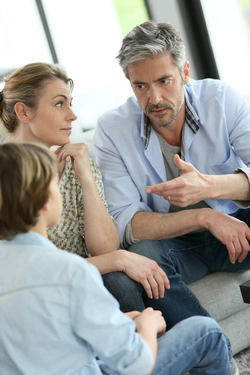
According to the Substance Abuse and Mental Health Services Administration, almost half of young people get their first high from a prescription drug by finding the pills in their home or getting them from a friend. Further, almost half of parents admit to keeping prescription drugs in the home that are no longer being used by anyone who lives in the home.1
This finding is one of the first of its kind that disproves the traditional understanding that young people get drugs from street corner dealers. Further, the finding suggests there is room for prevention and intervention, beginning with getting mind-altering drugs OUT of the home and educating youths on why such drugs can harm them.
New Research Shines Light on How Young People Get Pills
Recent surveys and research reports published by SAMHSA all point to one thing: young people are increasingly getting their first high by experimenting with prescription drugs they find at home.
A poll taken by the Mott Poll Report and published by the University of Michigan’s C.S. Mott Children’s Hospital found that nearly half (46%) of parents surveyed said they kept leftover prescription medications in the home. According to poll author Sarah Clark, MPH, and a co-director of the Mott Poll, “We found that it’s common for parents to keep medicines long after they are expired or no longer needed, which creates an unnecessary health risk for children. Younger children getting into medicine in the home is a major source of unintentional poisonings. For older children, access to these medicines brings risk of experimentation, diversion to peers, or other intentional misuse.” The researchers emphasized the importance of parents disposing of medicines.23
The researchers concluded that, ideally, no prescription pills would be left in the home that were not actively being consumed by a patient with a legitimate need for them. Further, all prescription drugs, whether mind-altering or not, should be stored in child-proof bottles and kept in locked medicine cabinets.
Prescription Drug Abuse Often Sets the Stage for Addiction in Young People
According to a detailed study into how people obtain and use prescription drugs, namely painkillers, SAMHSA found that young people ages 12 to 17 get opioid pharmaceuticals in the following ways:
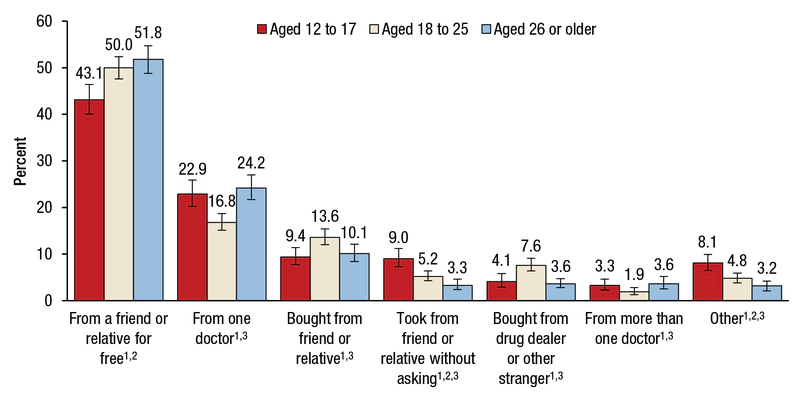
-
43% of young people get prescription painkillers from a friend, relative, or home medicine cabinet.
-
23% of young people get painkiller drugs from a doctor.
-
9% of young people buy the pills from a friend.
-
9% of youths steal the drugs from a relative.
Alarmingly, only 4% of people between the ages of 12 and 17 actually bought drugs from a drug dealer, which counters the now obsolete narrative that drug dealers are the number one risk to youths in terms of drug exposure.
For the first decade of the 21st century, the non-medical use of prescription pain relievers was the second most common type of illicit drug use in the United States, after cannabis use. While synthetic opioid use has since surpassed prescription painkiller use, pain relievers are still a common way that youths have their first experience with an opioid drug.
SAMHSA researchers spoke to the concern shared among medical experts regarding prescription opioids. “The percentage of people misusing pain relievers has declined; however, pain reliever misuse remains a public health concern because even as use declines, the number of deaths from overdoses and the number of admissions to substance use treatment involving opioids have increased.” Given the risks present and the ease with which families can make their homes safe, parents across the country should unite to make their homes substance-free.
How People Can Safely Dispose of Unused Medications
But how does one dispose of unused medications? According to the Mott Poll report cited earlier, many parents say they do not know how to dispose of medications. While prescription drug manufacturers, doctors, and pharmacies should all take responsibility for informing parents on how to dispose of unused meds, the Food and Drug Administration has also published information that parents can use to get pharmaceuticals out of their homes and into safe disposal.4
According to the FDA:
-
Make use of Take Back programs when available. The Drug Enforcement Administration sponsors National Prescription Drug Take Back Days throughout the year. Also, many pharmacies offer on-site drop-off boxes and mail-back programs where patients can dispose of unused meds for free.5
-
When Take Back programs are unavailable, parents should check their prescription bottle labels. Only flush an unused medicine down the toilet if the bottle or prescription leaflet says it is safe. If the medicine bottle or leaflet does not provide instructions regarding flushing, the FDA has provided a list of safe and unsafe medicines for such disposal.6
-
It’s worth mentioning that there is always an environmental concern regarding flushing prescription medications down the toilet. A growing body of research has shown that prescription drugs, especially prescription opioids, have contaminated water supplies and ecosystems, begging the question of whether or not flushing meds is still a safe and ethical practice. That is why the best way to dispose of medication is always to return the meds to a DEA drop site, pharmacy, or doctor’s office.7,8
-
The FDA also recommends disposing of some unused medications in household trash by removing the drugs from their original container, mixing them with something undesirable (such as coffee grounds, dirt, or cat litter), putting the mixture in a sealable bag or container, and throwing the container in the garbage.
Any of the above options for removing potentially addictive and mind-altering pharmaceuticals, even the flushing option, is safer and better for the household than keeping the medicines lying around.
Stop Addiction at Its Source
Every parent has a responsibility and a deep desire to create the safest home they can for their children. Given that a growing percentage of youths are having their first drug experience with prescription drugs they obtain from their home or a friend and not from a dealer shows that parents can do quite a lot to keep their kids safe. Parents should ensure the home is safe and secure for their children. The home should not be a health risk.
Sources:
-
SAMHSA. “How People Obtain the Prescription Pain Relievers They Misuse.” Substance Abuse and Mental Health Services Administration, 2014. samhsa.gov ↩︎
-
MPR. “Parent actions around expired and leftover medicine in the home.” Mott Poll Report, 2022. mottpoll.org ↩︎
-
HealthLine. “Nearly Half of Parents Say They Have Leftover Prescription Medications at Home.” HealthLine, 2022. healthline.com ↩︎
-
FDA. “Where and How to Dispose of Unused Medicines.” Food and Drug Administration, 2022. fda.gov ↩︎
-
DEA. “National Prescription Drug Take Back Day is April 22, 2023 – 10AM to 2PM.” Drug Enforcement Administration, 2023. deadiversion.usdoj.gov ↩︎
-
“Disposal of Unused Medicines: What You Should Know.” Food and Drug Administration, 2022. fda.gov ↩︎
-
MPCA. “Don’t flush medicines down the drain.” Minnesota Pollution Control Agency, 2022. pca.state.mn.us ↩︎
-
PSI. “Bay mussels in Puget Sound show traces of oxycodone.” Puget Sound Institute, 2018. pugetsoundinstitute.org ↩︎


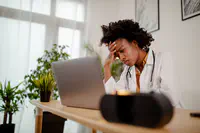

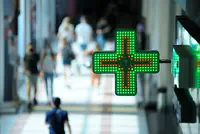

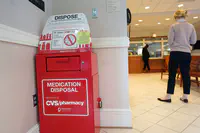
 ®
®